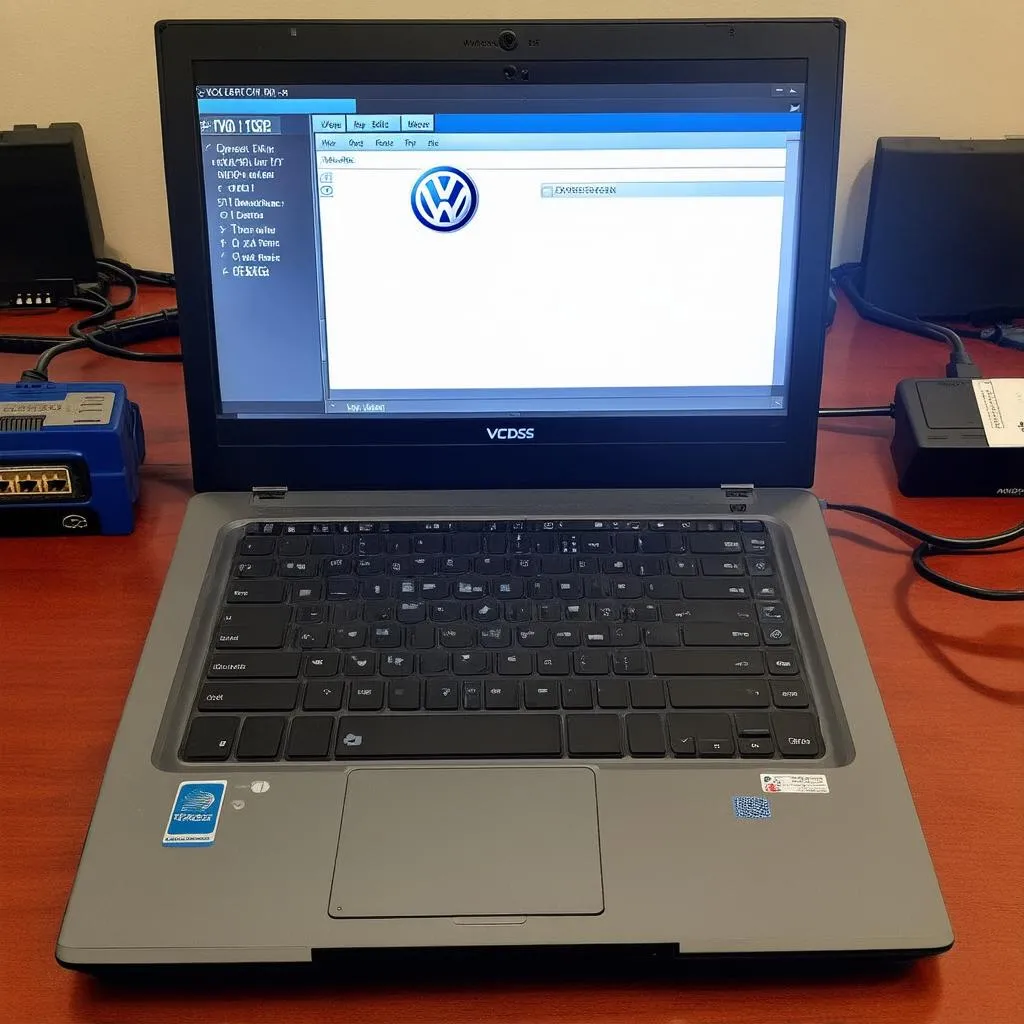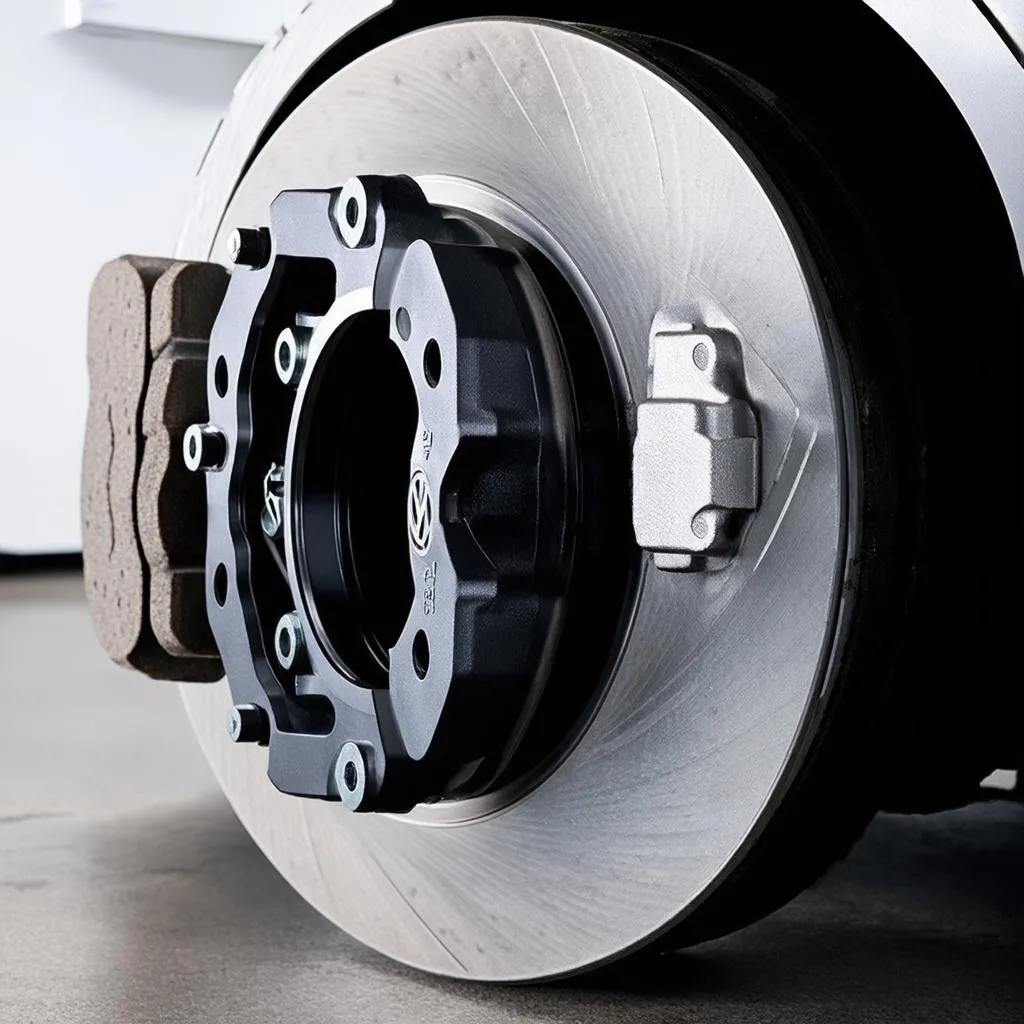If you’re a Volkswagen CC owner, you know that maintaining your vehicle’s braking system is paramount for safety and optimal performance. Occasionally, you might need to retract the calipers on your VW CC, a task often required for brake pad replacement or rotor work. While the process itself is relatively straightforward, having the right tools and knowledge can make a world of difference. This article will guide you through the process of retracting calipers on your VW CC using VCDS (Vag-Com Diagnostic System), a powerful software that gives you greater control over your vehicle’s systems.
Understanding the Importance of Proper Caliper Retraction
Before we delve into the how-to, it’s important to understand why proper caliper retraction is crucial. Your VW CC utilizes a disc brake system, which means brake calipers are responsible for clamping the brake pads against the rotors to slow down or stop your vehicle. Over time, the brake pads wear down, and the caliper pistons need to extend further to compensate. Retracting the calipers pushes the pistons back into their housings, creating the necessary space for new brake pads or serviced rotors.
Why Use VCDS for Caliper Retraction?
While many choose to retract calipers manually using tools like a C-clamp or a brake piston tool, using VCDS offers a distinct advantage, especially for vehicles equipped with an Electronic Parking Brake (EPB) like some VW CC models. The EPB system integrates with your rear calipers. VCDS allows you to retract the calipers electronically, ensuring the EPB system disengages properly and preventing potential damage.
Step-by-Step Guide to Retracting Calipers on a VW CC with VCDS
Here’s a detailed guide on how to retract your VW CC’s calipers using VCDS:
Prerequisites:
- A laptop with a working copy of VCDS software installed.
- A reliable VCDS cable compatible with your VW CC.
Procedure:
- Connect VCDS: Begin by connecting your laptop to your VW CC’s OBD-II port using the VCDS cable.
- Initiate VCDS: Launch the VCDS software on your laptop and establish communication with your vehicle.
- Select Control Module: Navigate to the “Control Module” section within VCDS.
- Choose “Brake Electronics”: Look for and select the module labeled “Brake Electronics” or similar, as the exact name might slightly vary depending on your VW CC’s model year.
- Basic Settings: Within the Brake Electronics module, locate and select “Basic Settings.”
- Retract Calipers: You should see an option for “Retract Calipers” or “Open Rear Calipers.” Select this option.
- Follow On-Screen Instructions: VCDS will provide you with specific instructions on the screen. Carefully follow these instructions, which usually involve turning the ignition on or off and confirming actions.
- Monitor Progress: VCDS may show you the progress of the caliper retraction. Once the process is complete, you’ll usually receive a confirmation message on the software.
- Exit VCDS: After confirming the calipers are retracted, exit the Basic Settings mode and properly disconnect VCDS from your vehicle.
Important Notes:
- This procedure primarily focuses on retracting rear calipers, especially important for models with EPB. Front calipers on most VW CC models can be retracted manually.
- If you encounter any error messages or the retraction process fails, it’s crucial to stop and consult with a qualified mechanic or a VW specialist. Forcing the process could potentially damage the braking system.
 VCDS connected to a VW CC
VCDS connected to a VW CC
Why VCDS is a Valuable Tool for VW Owners
Beyond caliper retraction, VCDS provides VW owners with a comprehensive suite of diagnostic and customization options. You can use it to:
- Read and Clear Fault Codes: Identify and address any underlying issues within your vehicle’s systems.
- Activate/Deactivate Features: Enable or disable specific features based on your preferences.
- Monitor Sensor Data: Access real-time data from various sensors, providing insights into your vehicle’s performance.
- Adaptations: Make fine-tune adjustments to certain modules, optimizing your driving experience.
Commonly Asked Questions about Retracting Calipers on a VW CC
Q: Is it safe to retract calipers without VCDS on a VW CC with EPB?
A: It’s highly discouraged. Attempting to retract calipers manually on a VW CC with EPB can damage the EPB system and potentially lead to costly repairs.
Q: What if my calipers won’t retract even with VCDS?
A: This could signal a problem with the caliper, the EPB system, or other components. It’s best to consult a qualified mechanic or VW specialist for diagnosis and repair.
Q: Can I use any VCDS cable with my VW CC?
A: Not necessarily. Ensure your VCDS cable is compatible with your specific VW CC model year for proper communication.
 VW CC brake caliper
VW CC brake caliper
Cardiagtech: Your Partner in Automotive Diagnostics and Tools
Finding reliable automotive diagnostic tools and equipment is essential for any enthusiast or professional working on vehicles. Cardiagtech offers a comprehensive range of high-quality diagnostic tools, including VCDS cables and software, designed to meet the needs of VW, Audi, Seat, and Skoda owners.
Investing in the right tools from a reputable provider like Cardiagtech empowers you to perform various tasks on your VW CC, from routine maintenance to more involved procedures like caliper retraction, with confidence and precision.
Conclusion
Retracting calipers on your VW CC, especially those equipped with EPB, is made significantly easier and safer using VCDS. By following the step-by-step guide outlined above, you can confidently perform this task at home. However, always prioritize safety and consult with a qualified mechanic if you encounter any issues or are unsure about any step.
Are you interested in exploring a wide range of automotive diagnostic tools and equipment for your VW CC or other vehicles? Connect with CARDIAGTECH today to discover how their products can enhance your automotive work.
